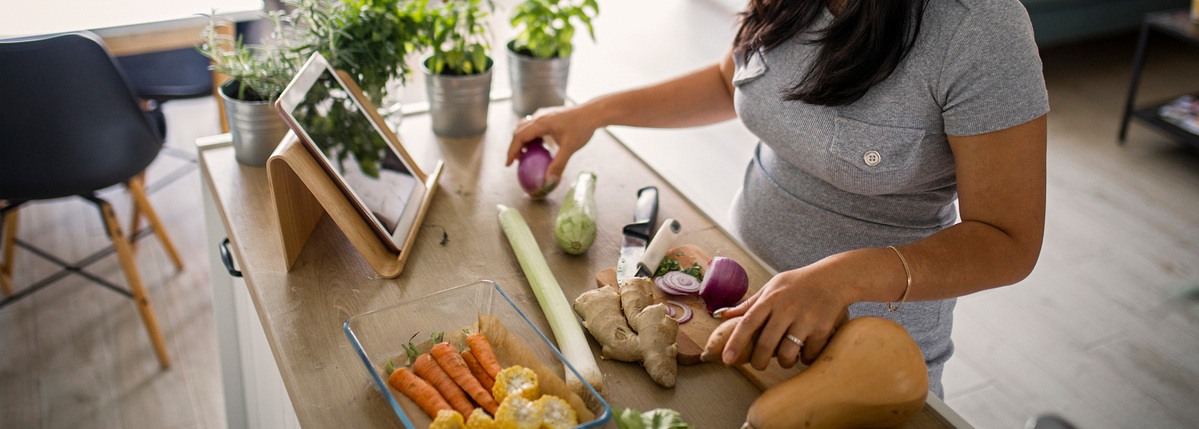Diabetes Denial: How can I face my diabetes diagnosis?
Written by: Ginger Vieira
5 minute read
December 9, 2021
Struggling with denial that you've been diagnosed with diabetes? Here are a few ideas to help you move forward.
This educational content is brought to you by the ADA x BT1 Collab.
The following transcript has been edited for length and clarity.
Ginger Vieira: Welcome to Collab Conversations with the American Diabetes Association and Beyond Type I. My name is Ginger Vieira. And with me today is Dr. Cynthia Munoz, president of healthcare and education at the American Diabetes Association. And we’re going to pick her brain today about diabetes denial. Hi Dr. Munoz.
Dr. Cynthia Munoz: Hi Ginger. It’s a pleasure to be here.
Thanks. Thanks for coming. Man, diabetes denial. It’s kind of a humongous topic that affects millions of people. Where do we even begin? How often do you feel like you’ve seen it in patient care, personally?
So I do hear people who are newly diagnosed with type 2 diabetes and their loved ones talk about the enormity of this word diabetes. And oftentimes, when we talk about denial, it really is people that may be experiencing some difficulty in understanding that their loved one truly has type 2 diabetes, or understanding or believing that they have it.
It happens a lot, because the things that people often think about when they think about type 2 diabetes are not necessarily true. A lot of people think people with type 2 diabetes might look a certain way or that there might be certain things that are true about them, like the things that they eat or the experiences that they’ve had. And that’s also not always true.
Okay. So a lot of what we get from mainstream media that’s incorrect and inaccurately portrays diabetes and even I would imagine what people think they ought to feel like if they had diabetes. They could feel fine, because they’ve gotten used to their blood sugars running higher. So it would be hard to believe that there’s something wrong.
Right. And it’s not just the media, but it’s what we hear in our communities. It’s what people talk about even with their healthcare providers, believe in it or not.
So what is the first step to helping either yourself or someone you love, address that they do have diabetes, and they need to kind of grasp that and accept it. How do you get past denial?
I think the first step is to really understand what it means to have diabetes. So let’s say we’re talking about type 2 diabetes, and you have been told that you have type 2 diabetes, or you have been told that your loved one has type 2 diabetes. If you find yourself wondering how is that possible, do I or does my loved one really have type 2 diabetes? I would start by asking more questions. What does it mean that I have type 2 diabetes? How did you determine that I have type 2 diabetes, or how do you know that my loved one has type 2 diabetes?
But by better understanding how professional in front of you, who’s telling you, you have this diagnosis or that your loved one does, asking lots of questions until you understand what having type 2 diabetes means. Then I think it is about taking a breath and sitting back and giving yourself time to think about what that professional has explained and how that might be true for you or for your loved one.
Even just asking to see the results from your blood work, your A1C and your blood sugar level, your fasting blood sugar and asking your healthcare professional to show you what is a non-diabetic normal blood sugar level goal. And what is my blood sugar that indicates I have diabetes, to really see those numbers?
Yeah, absolutely. I don’t know about you Ginger, but I know I’ve been to doctors that have a little whiteboard piece of paper, and they’ll draw pictures. So yeah, I really like that idea of helping me literally see the picture or the piece of paper that shows me that your definition of type 2 diabetes is true for me, by showing me the number. How does my number compare to the numbers for people that don’t have diabetes? Or how has my number changed over time? You told me before that I don’t have type 2 diabetes, and now I do. What’s happened?
And then I would imagine some people have learned from misinformation that the kind of the doom and gloom of diabetes that you and I know isn’t necessarily true, that there’s so much we can do to be healthy with any type of diabetes. Is the next step to really realize that now you have information, and now you can find the right tools to help you live well with diabetes?
Yeah, absolutely. You bring up a really good point, where oftentimes people are told that they have diabetes, type 2 diabetes, they imagine the worst, either because they’ve heard stories or they’ve never really had to think about diabetes and what it means. And you imagine that a professional is telling me that something is wrong with my body, or my body isn’t working the way that it’s supposed to. And that must mean that something is really wrong.
I do think that once you understand what diabetes means and why the professional is telling you that you have this medical diagnosis, the next step really is looking at what can I do now based on this information. Because we know that people with all types of diabetes can live full, healthy lives and can be productive and can do all the things that they wanted to do before they got this diagnosis.
But it is new information. Having new information can be overwhelming. And because it’s new information, it requires any of us to take time to get more information to really understand what it all means and what we can do about it.
How much power you do have once you accept the diagnosis and take action and learn what resources, whether it’s medication, technology, changes in lifestyle habits to help you live a full life as a person with diabetes.
Absolutely. And when talking with a medical provider about these steps, about the options, it’s really important to understand that when you are having these conversations for the first time, you may be feeling overwhelmed.
You may be experiencing higher levels of stress than you would if you were having a conversation with a friend. And so what happens when we have more stress or when we’re more worried or overwhelmed or confused, is that sometimes it takes us more time to really understand and remember the information we’re receiving. Sometimes we need to hear more than once.
So when you are getting that information, if you can, ask for a piece of paper, pencil, pen. Write it down. Ask, are you going to give me this information in writing or in some other way that works for you. And if the person that is explaining this information to you is talking really fast, if you’re feeling like they’re losing you, it’s okay to ask that person to repeat what they have just said. It’s okay to tell that person, can we pause? And I need to take a breath, or I need to get a breath of fresh air so that I can really hear what you’re saying to me.
Remember your healthcare team works for you, and get the support that you need.
That’s right.
Well, thank you so much for helping us talk about diabetes denial and how to move forward.
My pleasure, Ginger.

Author
Ginger Vieira
Ginger Vieira is an author and writer living with type 1 diabetes, Celiac disease, fibromyalgia, and hypothyroidism. She’s authored a variety of books, including “When I Go Low” (for kids), “Pregnancy with Type 1 Diabetes,” and “Dealing with Diabetes Burnout.” Before joining Beyond Type 1 as Digital Content Manager, Ginger wrote for Diabetes Mine, Healthline, T1D Exchange, Diabetes Strong and more! In her free time, she is jumping rope, scootering with her daughters, or walking with her handsome fella and their dog.
Related Resources

We’re inundated with messaging about “mindfulness” in our culture. Sometimes it seems to refer to...
Read more

There is no doubt that food plays a crucial part in overall type 2 diabetes...
Read more

The start of a new year inspires many of us to re-evaluate our lives—our goals,...
Read more

